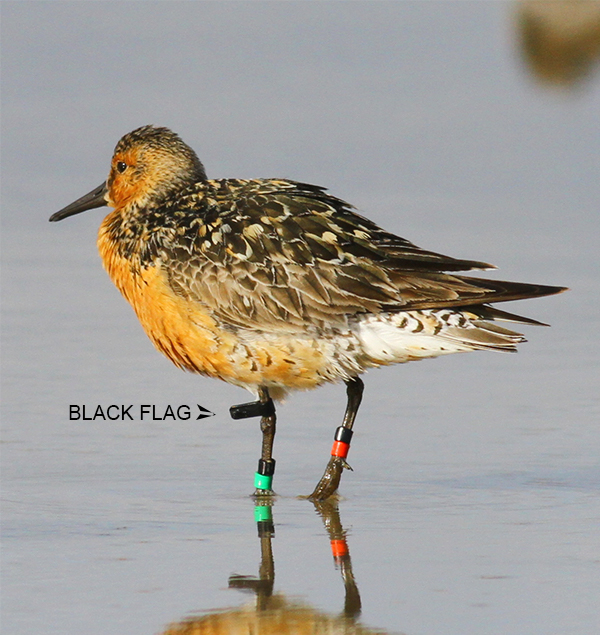Resighting Red Knots
Resightings of Red Knots can be sent to shorebirds@nioz.nl describing the colour-ring combination, the observation date and location. Additional data which we would like to receive are: the type of terrain, the flock size and if possible, the ring density (the number of colour-ringed individuals and the total number of observed birds) and the plumage (summer or winter plumage; if possible expressed as a percentage).

Colour-ring combination
The colour-ring combination consist of four colour-rings and a flag (a ring with a kind of streamer). There are two colour-rings on each lower leg (the tarsus) with the flag in one of eight possible positions. The flag colours that have been used since 1998 are shown are (in chronological order): Yellow (Y), Red (R), Green (G), Lime (L) and black (N) and from 2017 onwards we’ve started to use Yellow (Y) flags again. Each bird also carries a metal ring, this is not part of the colour combination. In most cases the metal ring is on the upper leg (tibia), the flag can also be on the tibia, but never a colour-ring!
Since 2017, yellow flags are used in combination with four colour-rings. The colours used are black (shorthand N in accordance with international agreements for colour-ringing), Red (R), Yellow (Y), Green (G) and Pale blue (P). To give an example: a Red Knot with a green over a yellow colour-ring on the left leg, a yellow flag on the right upper leg and two pale blue rings on the lower leg is quoted as Y2GYPP. First, the colour and position of the flag is noted and then the colour-rings from top to bottom, first for the left leg (of the bird) and then for the right leg.
Flag positions
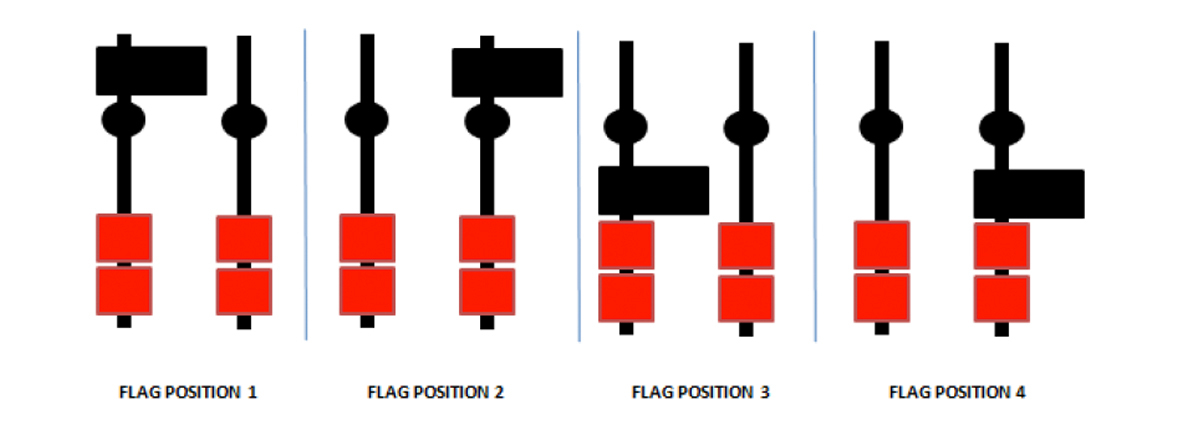
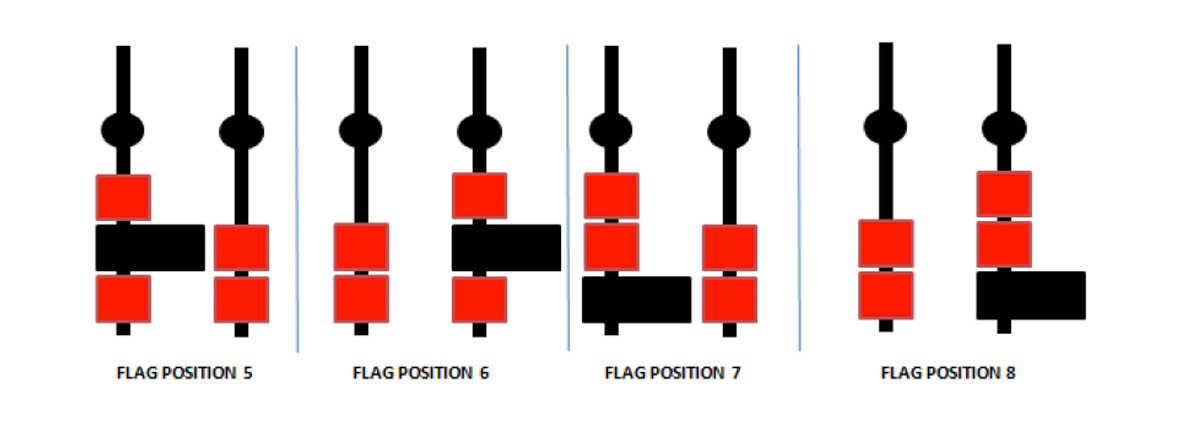
Since 2017 we’ve started to use Yellow flag again, we expect that nearly all the old Yellow flags have disappeared out of the population. For these Yellow flags we use the same colours as in combination with the black flags. The used colours are black (N), Red (R), Yellow (Y), Green (G) and Pale blue (P). An example of a bird with a yellow flag can be written down as follows: Y4GGYG.
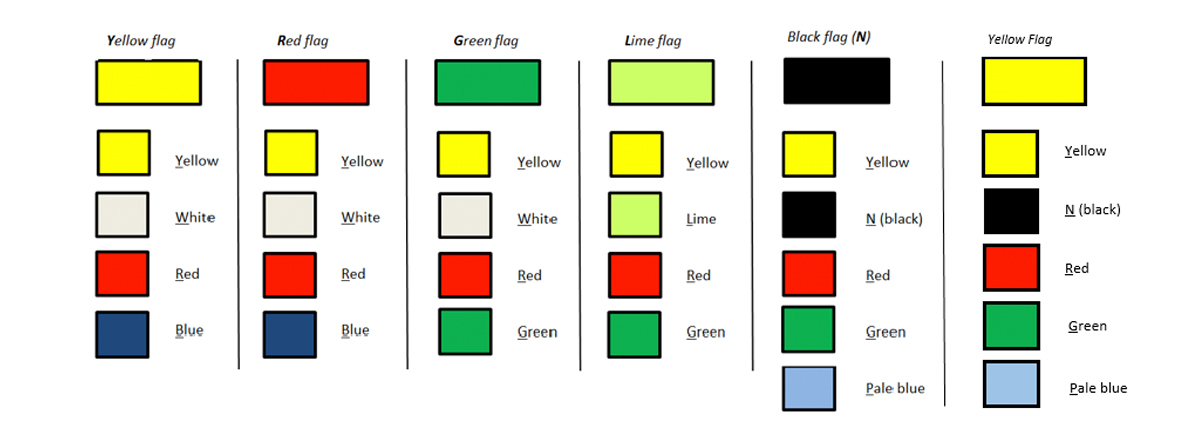
Ring loss - important to report!
In the early years of the study colour-rings were made of a plastic named Darvic. However, this material is no longer in production, so we are currently using a different material that has the properties of Plexiglas. These rings do not have eternal life and are often shorter than the maximum life of a red knot. This means there are incomplete combinations existing as a result of ring loss and some rings may be strongly faded as a result of ultraviolet light. We would also like to receive resightings of birds with incomplete colour-ring combinations, so we can get an idea of the amount of ring loss.
Information
We would also like to receive resightings of birds with incomplete colour-ring combinations
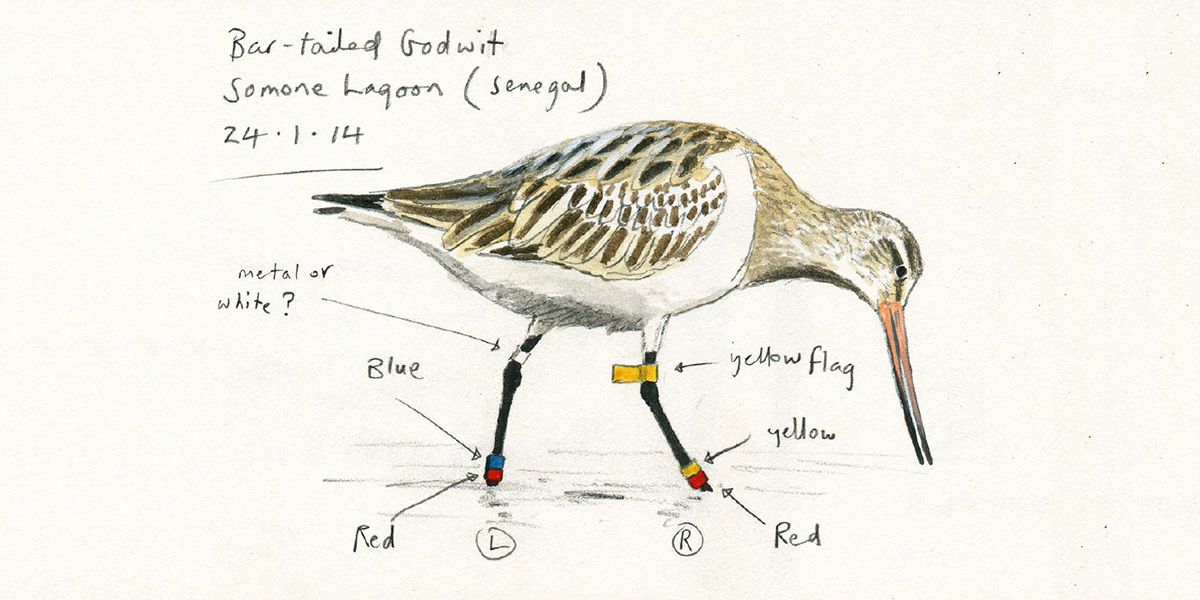
Since 2011, black flags are used in combination with four colour-rings
